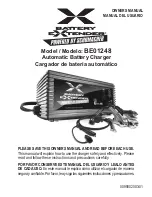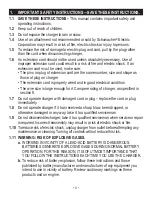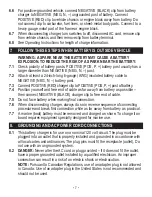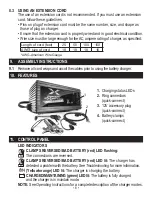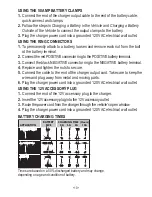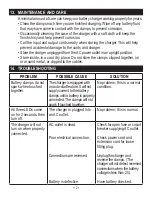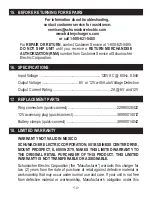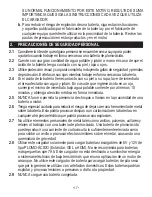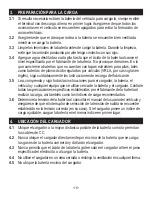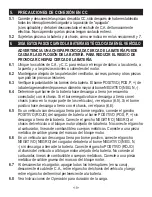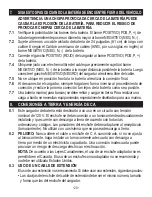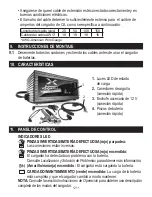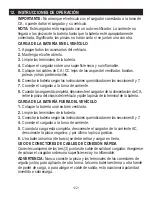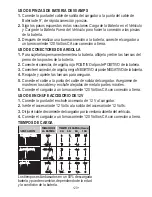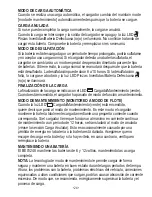
• 9 •
12. OPERATING INSTRUCTIONS
IMPORTANT: Do not start the vehicle with the charger connected to the AC
outlet, or it may damage the charger and your vehicle.
NOTE: This charger is equipped with an auto-start feature. Current will not be
supplied to the battery clamps until a battery is properly connected. The clamps
will not spark if touched together.
CHARGING A BATTERY IN THE VEHICLE
1. Turn off all the vehicle’s accessories.
2. Keep the hood open.
3. Clean the battery terminals.
4. Place the charger on a dry, non-flammable surface.
5. Lay the AC/DC cables away from any fan blades, belts, pulleys and other
moving parts.
6. Connect the battery, following the precautions listed in sections 6 and 7.
7. Connect the charger to an electrical outlet.
8. When charging is complete, disconnect the charger from the AC power, remove
the clamps from the vehicle’s chassis, and then remove the clamp from the
battery terminal.
CHARGING A BATTERY OUTSIDE OF THE VEHICLE
1. Place battery in a well-ventilated area.
2. Clean the battery terminals.
3. Connect the battery, following the precautions listed in sections 6 and 7.
4. Connect the charger to the electrical outlet.
5. When charging is complete, disconnect the charger from the AC power,
disconnect the negative clamp, and finally the positive clamp.
6. A marine (boat) battery must be removed and charged on shore.
USING THE QUICK-CONNECT CABLE CONNECTORS
Connect any of the three (3) output cable leads to the charger. Make sure to
place the charger on a dry, non-flammable surface.
WARNING: Never connect the clamp and ring terminal connectors together
for use in other applications, such as external battery or other power source
charging, or to extend the output cable length, as reverse polarity and/or
overcharge conditions will occur.
Summary of Contents for BATTERY EXTENDER BE01248
Page 30: ... 30 ...

